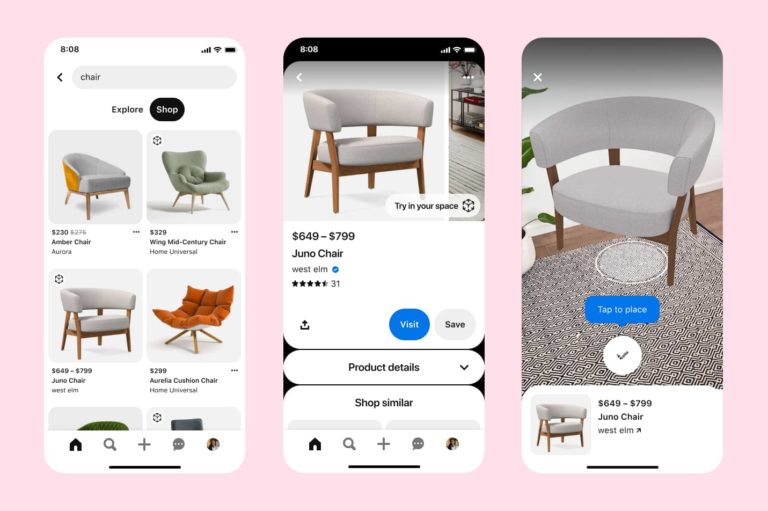
Shoppability is the new black. There’s a trend towards all things being shoppable. We’re talking buy buttons on everything from YouTube videos to Instagram Stories. This isn’t necessarily a new phenomenon but is one of the many trends that’s been Covid-accelerated.
Elsewhere – and for similar reasons – we see a separate trend: visual commerce. This includes product visualization and visual search. The former lets you try on everything from shoes to lipstick to couches using AR lenses. The latter identifies things you point your phone at.
Panning back, these two trends – shoppability and visual commerce – are on a collision course. Point your phone at a jacket a friend is wearing using Google Lens or Snap Scan, then buy it right on the spot. It compresses the purchase funnel through a visually-informed decision flow.
All of the above is well underway, but there’s a ways to go in capability and cultural acclimation. Accelerating that process is eCommerce inflections in the Covid era. Another accelerant is apps like Snap that let AR piggyback on socially-fueled shopping and product discovery.
AR and Shopping Collide, Part I: Snap
Inspiration into Purchase
Pinterest is another exemplar. In fact, it’s the original visual-shopping play, introducing image-based product discovery before it was popular in social feeds like Instagram. Now, with that visual shopping DNA, it’s blitzing AR to let shoppers better contextualize products.
For example, using its Pinterest Lens, shoppers can point their phones at real-world items to identify and find/pin them on Pinterest. And its “Try on for Beauty” feature lets shoppers virtually apply 14,000 cosmetics products. Usage has grown 34 percent in the past year.
Now it’s expanding to furniture. Its latest feature lets shoppers visualize home decor in their space. This builds on Pinterest Lens and is available already for 80,000 shoppable pins from brand partners including Crate & Barrel, Walmart, West Elm, and Wayfair.
To use the feature, shoppers click on supported pins then choose “Try in Your Space.” After visualizing a given item, they can purchase it by clicking the pin again to be sent to a checkout page. Whether it’s cosmetics or couches, it’s all about turning inspiration into purchase.
Can Pinterest Pull Ahead in AR Shopping?
Doubling Down
Stepping back and looking at the progression of cosmetics to couches, it aligns with a key trend in visual shopping. As seen in Snap’s AR evolution, it’s about moving from the front-facing camera to the rear-facing camera. The latter augments the broader canvas of the physical world.
That evolution is important because it expands the use cases and product categories. Rather than products that can go on one’s face (lipstick, sunglasses, etc.), this flavor of visual shopping extends to everything from cars to coffee makers. And monetization expands with it.
Speaking of monetization, Pinterest isn’t charging its retail partners for transactions or affiliate revenue. It’s simply adding AR to boost stickiness and show more value to brands. This is meant to hook them in as advertisers that double down on ad spend (Promoted Pins).
In other words, Pinterest is playing a long game. It sees 3D product visualization as a key part of its evolution as a visual shopping leader. In that way, AR fits its DNA. So expect more features and formats that are purpose-built for high-value categories like furniture and fashion.
We’ll circle back in the next installment to look at another eCommerce leader innovating in visual commerce…

